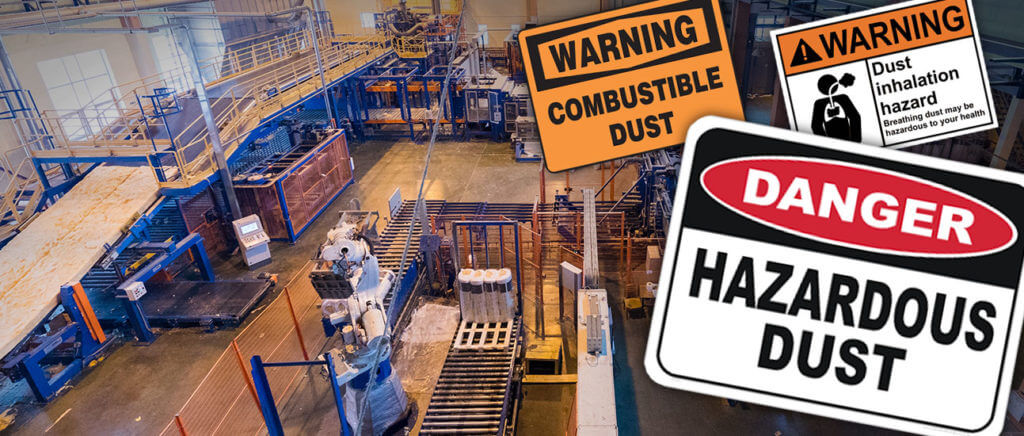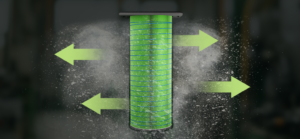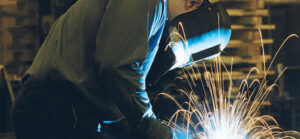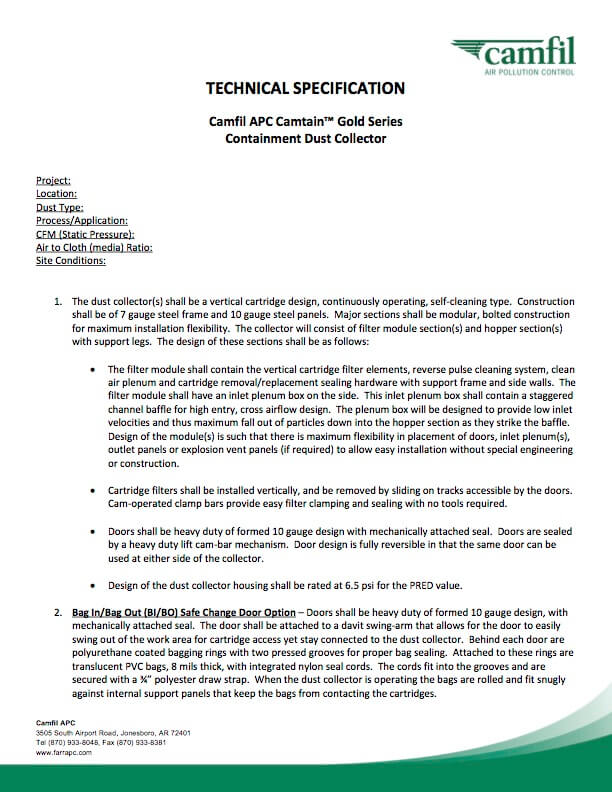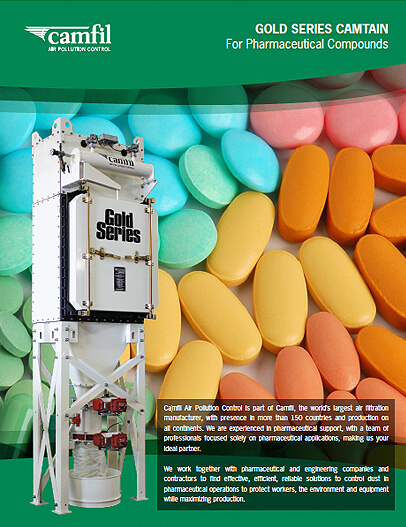If your facility’s manufacturing processes generate hazardous dust, one of your priorities is ensuring air quality. Dust, especially airborne dust particles, must be safely collected and contained to protect worker safety and meet regulatory compliance. Here are key considerations for your dust collection safety game plan.
Comply with OSHA PELs
Your dust collection system must enable your facility to meet OSHA’s permissible exposure limits (PELs) for the dusts produced at your facility. OSHA established these PELs based on an eight-hour time-weighted average (TWA) for hundreds of dusts—ranging from nonspecific or “nuisance” dust to highly toxic substances. They are listed in OHSA's annotated PELs tables. Note that:
- The OSHA PELs requirements determine the minimum level of filtration efficiency your fume collector must achieve.
- It’s important to request a written guarantee from your dust collector supplier stating the maximum emissions rate for the equipment over an eight-hour TWA. Filter efficiency stated as a percentage is not an acceptable substitute, even if the supplier promises 99.9 percent efficiency. That's because OSHA only cares that the quantified amount of dust in the air is below the PEL.
Address Combustible Dust Issues
If your facility produces or processes combustible dusts, chances are you already have a dust collector. This dust collector must be equipped with deflagration protection, such as explosion venting. The National Fire Protection Association (NFPA) 68 Standard on Explosion Protection by Deflagration Venting provides stringent and mandatory requirements for dust collection applications involving explosive dusts. Note that:
- NFPA 68 focuses on explosion venting of combustion gases and pressures resulting from a deflagration within an enclosure or dust collector.
- The safety objective of NFPA 68 is to prevent structural failure of the enclosure and minimize injury to personnel in adjacent areas outside of the enclosure.
To determine if your particular dust is combustible, you must have it tested for explosibility, following ASTM test methods. The explosive power of a dust is denoted as “Kst,” the rate of pressure rise. Any dust with a Kst value greater than "0" is considered to be potentially explosive.
Explosive dusts can be organic or metallic in nature. They are present in a long list of manufacturing industries including agricultural, chemical, food, paper, pharmaceutical, textile and woodworking.
Optimize for Safety
In addition to having systems to safely collect and contain hazardous dusts, make sure to install equipment that ensures safe operation. Here are some examples:
- OSHA-compliant railed safety platforms and caged ladders can prevent slips and falls when workers access the dust collector for service.
- Lockout/Tagout doors prevent injury or exposure caused by inadvertently opening doors during a pulsing cycle.
- Where highly toxic dust is being handled, a bag-in/bag-out (BIBO) containment system may be required to isolate workers from used filters during change-out.
- Filter cartridges should be positioned for ease of access, and they should readily slide in and out of the housing. Pulling out a 100-pound dirty overhead filter can result in neck, back and foot injuries, so make sure the collector you choose is service-friendly.
To optimize fire and explosion protection, you can use a range of features and technologies. These include using flame-retardant filter media, installing spark arrestors, and installing sprinkler systems.
You might also want to equip your collector with a safety monitoring filter. This high-efficiency air filter prevents collected dust from re-entering the workspace if there is a leak in the dust collector’s primary filtering system. A safety monitoring filter is a required component of a dust collection system that recycles air downstream of the collector.
Consider Vertical Cartridge Mounting
Some pleated filter cartridges are mounted on their sides inside the dust collector. This can be a safety hazard because a cake of dust often remains on top of the filters. Also, heavy or abrasive particles often don’t get separated from the air stream.
This situation can shorten filter life. But more importantly, in spark-generating applications, horizontal filters can pose a fire or explosion hazard. It is safer to use vertically mounted cartridges, which reduce the load on the filters and make the system safer and more efficient.
If you’d like more information about dust collection safety best practices, our experts are ready to help.
 Americas
Americas 